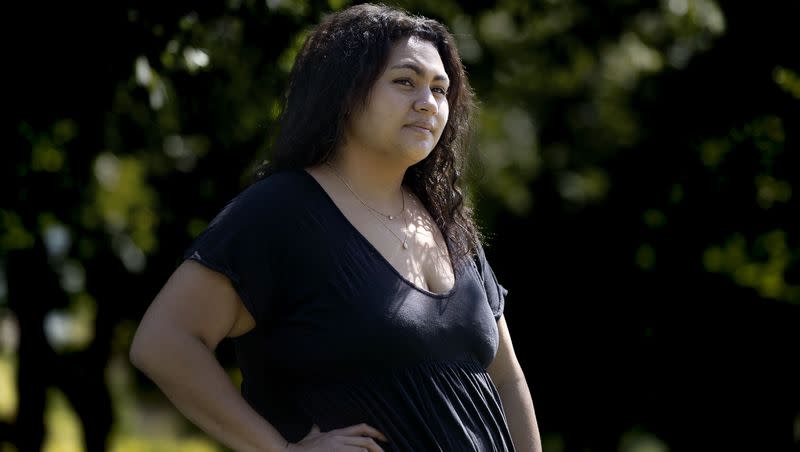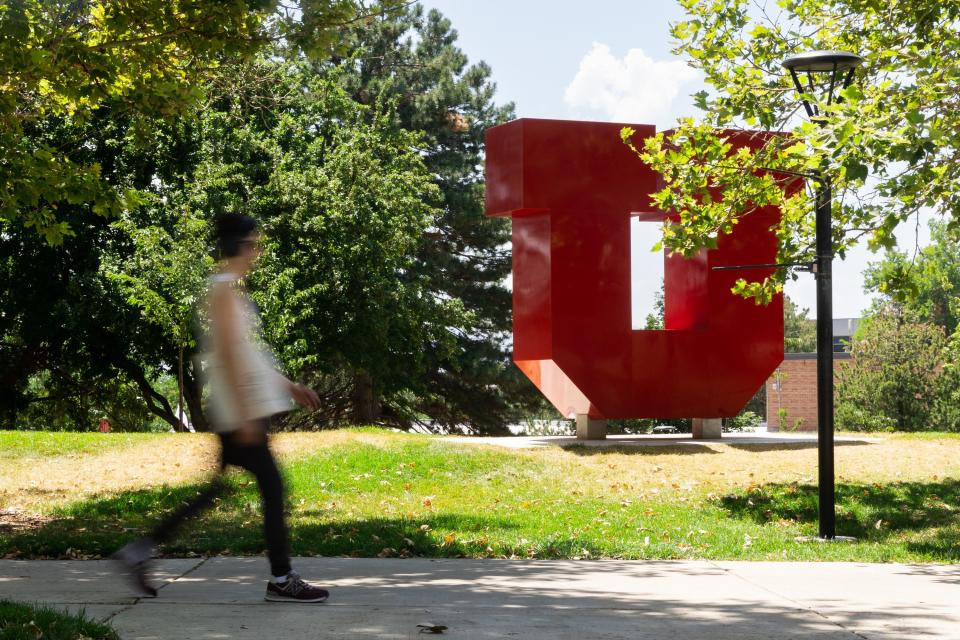Post-SCOTUS, what’s next for Utahns with student loans?

The Biden-Harris administration is finding other ways to help students pay off debt after the Supreme Court struck down President Joe Biden’s student loan forgiveness plan in a 6-3 decision in June.
Biden immediately announced a new income-driven repayment plan, called the Saving on a Valuable Education plan, following the ruling, and the U.S. Department of Education guaranteed $39 billion in relief to 804,000 borrowers this July, which includes forgiveness for nearly 4,000 Utahns.
Utah students who talked to the Deseret News have mixed feelings about the fall of Biden’s plan and the options that remain.
All this comes as loan repayments are set to resume in October after a three-year hiatus. Here’s what Utahns need to know about the state of their student loans.
Loan forgiveness and the SAVE plan
Biden’s original debt relief plan, which was one of his major campaign promises in 2020, proposed forgiving up to $20,000 per borrower and would have wiped out more than $400 billion in debt. But the Supreme Court deemed the plan unconstitutional on June 30, and Biden responded by announcing the Saving on a Valuable Education plan later that day.
The SAVE plan, which the Biden administration declares “the most affordable repayment plan ever created,” increases the income exemption from 150% to 225% above the poverty line. That means individuals earning less than $32,805 annually and families of four making under $67,500 will qualify for $0 monthly payments. Borrowers earning more than these amounts will still save “at least $1,000 per year, compared to the current income-driven repayment plans.”
A full list of poverty guidelines is available on the website of the U.S. Department of Health and Human Services’ office of the assistant secretary for planning and evaluation.
The SAVE Plan will replace the Revised Pay As You Earn income-driven repayment plan, dubbed REPAYE. It’s a new way for borrowers to make lower monthly payments.
There are four income-driven repayment plans borrowers can apply for.
Additionally, a July 14 press release from the U.S. Department of Education announced debt relief for 804,000 borrowers. The loans will be automatically discharged in the next few weeks for those who have made either 20 or 25 years of payments. The release says the move addresses the historical failures of the federal student loan program when it comes to income-driven repayment plans.
“At the start of this administration, millions of borrowers had earned loan forgiveness but never received it. That’s unacceptable,” said Undersecretary James Kvaal. “Today we are holding up the bargain we offered borrowers who have completed decades of repayment.”

Utah schools respond
In light of the recent Supreme Court decision, Utah State will be reaching out to students entering the repayment phase, according to a university spokeswoman. She said the full approach consists of:
Educating students on various steps and tools like exit counseling.
How to keep in touch with their loan servicer.
How to get out of default.
How to set payments with their loan servicers.
Loan repayment plans, etc.
Following the ruling, Utah Tech sent the following statement to the Deseret News:
“Utah Tech will continue to follow direction from the U.S. Department of Education and help our students as they navigate paying for colleges. By offering the lowest university tuition in the state, Utah Tech is committed to helping make it attainable for students to graduate debt free. We will maintain this commitment to affordable tuition while offering student support services and quality education in more than 250 academic programs to help Trailblazers graduate career ready.”
When it comes to Utah’s students, the Supreme Court decision complicates matters for many.
Sam New, a senior education major at Utah Tech University, was relying on Biden’s original debt relief plan. It was a big reason New decided to take out a loan at his previous school, Southern Utah University, after a bad accident totaled his car. Now, he’s in a bind.
“I have a year to come up with $10,000,” New said.
In addition to being a full-time student, New is working three jobs to give himself a chance. He also might apply for scholarships but says it is “really competitive.”
New also addressed Biden’s SAVE plan, saying it is “better than nothing,” but will barely affect him.
“The reduced payments are nice, but only delay the payment issue,” he said.
Utah State University and Utah College Republicans Chair Ryan Smith was “happy” with the decision. Smith said he can’t get behind relieving billions of dollars in debt because of the monetary pressure it would put on lower- and middle-class individuals.
But he doesn’t believe the Supreme Court is the entity to decide these types of issues.
“I think that the executive branch sometimes oversteps on power,” said Smith, who doesn’t have any student loans. “And in the same way, the Supreme Court shouldn’t be the one making all the decisions and creating legislation.”
University of Utah student Mitchell Chinburg agrees that the Supreme Court is out of bounds.
“(The Supreme Court) has clearly stepped into a role of policymaking instead of checks and balance regulations,” he said.
Karanda Heimuli, a Utah native set to graduate from Cornell University this fall, has a different perspective. Fortunately, her student loans are manageable, but Heimuli still looked forward to some relief from Biden’s plan and thought the decision was a “slap in the face.”
“If you want to be a doctor because you care about helping people, the thought in the back of your head shouldn’t be student loans, the thought in the back of your head should be helping people,” she said.
Heimuli grew up in a generally nice area with access to college counselors, but she points out this isn’t always the case. The reality is that certain areas of the country have less resources, Heimuli says, and that can make the pursuit of higher education more difficult.
She believes “applying for scholarships should not be considered a luxury,” but everything she’s seen indicates they are.
Expectations for students and borrowers
For now, borrowers should be receiving notices from their loan servicers about resuming repayment on federal student loans in October.
Executive Director of Financial Aid and Scholarships at the University of Utah Anthony Jones said as repayments start, the best thing for borrowers to do is contact their loan servicer.
But that may not be so simple, because some loan servicers have gone out of business or changed names. Remember, even if a loan servicer has gone out of business or changed names, it doesn’t mean the loan is forgiven — it needs to be repaid to someone else.
“It could be confusing, so what the best advice is, is to log into studentaid.gov ... to know who their servicer or servicers are, and to be able to contact them,” Jones said.
Students should avoid the risk of becoming “delinquent,” which occurs after a late payment. Delinquency can lead to defaulting, and that can damage someone’s credit.
Borrowers do have options when choosing how to repay a loan. The federal student aid website suggests if federal student loan payments are high compared to their income, then students should consider applying for one of four income-driven repayment plans.
An income-driven repayment plan is a repayment option that sets a borrower’s monthly payment based on the income and family size of the borrower.
The first plan, the REPAYE plan, will soon be replaced by the Biden-Harris administration’s new SAVE plan. Originally, a borrower who chose the REPAYE plan would pay their loans at around 10% of their discretionary income over the course of 20 years for undergraduate studies and 25 years for graduate studies.
Discretionary income is the amount of money left over after taxes and general living expenses.
The other income-driven repayment plans include the Pay as You Earn, Income Based Repayment and Income Contingent Repayment plans.
Pay as You Earn and Income Based Repayment plans have eligibility requirements. Only new borrowers qualify for the Pay as You Earn plan. Other borrowers qualify when the required payment would be less than making a payment under the Standard Repayment Plan.
The Standard Repayment Plan is a basic repayment option for loans from the Direct Loan Program and Federal Family Education Loan Program. The payment plan is fixed for 10 years, or between 10 and 30 years for consolidation loans. This plan allows borrowers to pay off their loans in the shortest amount of time because they are making higher monthly payments.
The Income Contingent Repayment plan is available to all borrowers with eligible federal student loans, including Parent Loan for Undergraduate Student loan borrowers. To use the Income Contingent Repayment plan toward Parent Loan for Undergraduate Student loans, parents must consolidate them into a Direct Consolidation Loan.
A Direct Consolidation Loan allows borrowers to combine their existing loans into a new loan.
According to the student aid website, interest on student loans will start accruing on Sept. 1 and first payments are due in October, so it’s recommended that students begin repaying their loans while waiting for further action from the Biden-Harris administration.

